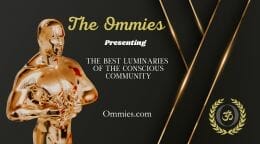A Resilient Body, A Resilient Mind

By Hilde Pols
We all know what the spine looks like. Many biology classrooms have a skeleton watching us from a corner, or we see close ups of the spine on the wall of some doctor’s office, in books or even adverts. Looking beyond its bones we encounter a beautiful curve. Although knowing the image of the spine, many still think of it as a column, some languages even refer to it as such (e.g. the German term literally means “vertebrae column”), not to mention the linguistic imagery words such as “book spine” evoke.
Waves of thought
Looking past the intricate construction, the spine is a swaying line, reminiscent of an oscillation wave. It forms a rolling image reminiscent of a vibration increasing in amplitude as it rolls out in its to and fro motion from the head downwards. This reflects how sound or light travels from its source, spreading out as it moves away from its “origin”. Though the spine “vibrates” only in a two-dimensional format, it still allows us to take the image of the traveling vibration further. The spine does not only hold us erect but harbors our signaling system: the nerves, a network of signals – or should we say vibrations – branching out to every nook and cranny of the body.
The posture of the Mind
So here we are, being told to “sit still”, “sit up straight” or “chest out, shoulders back, stomach in”. The resilience of the crafted vibration deep within our body is thus easily altered if not blocked, straightened out or otherwise tampered with. And just as the energy of a vibration works in all direction, so will these changes not only affect the body but also the source of the vibration – the mind.
The military rigid posture “chest out, shoulders back, stomach in” thus supports the drill and focus on action, no questions asked. It opposes a relaxed posture that frees the mind, and really shows how the shaping of the spine effects not only tension within the body but also within the mind. In “holding” ourselves in a certain way we thus not only affect the body, but our minds; we not only send out a message to the people around us about how we want to be seen, but also to ourselves about how to think. It is both an internal and external change of alignment, by simply changing how a few bones align, and a few muscles contract. Actors and musicians use this to influence sound, presence and interpretation: E.g. consciously causing or changing tension in a body part changes tone color, intent or feeling. In short we have a powerful weapon – a two edged sword – that needs skill both on the physical and the mind level.
It is easy to agree upon the fact, that we are living beings and thus, according to definition, we move. Yet it is easy to take things literally. So “sit still” easily becomes an image of a stone statue. And yet even a seemingly still tree is also a living being, and though it neither walks nor runs, it moves when the wind plays in its leaves. Without that resilience it would break. We might not “break” when really holding entirely still, yet the tension we build up to accomplish this will break or hinder intentions, health, creativity and flexibility. If we allow the body to be resilient and move within its balance the mind is likewise free from tension and thus that path can open up.
Think of how a breath of wind moves the tree we have been observing above. Now think of how the breath can move the entire body when it assumes such resilience. But this breath does not only indicate resilience, but also nourishment (carbon-dioxide to the tree; oxygen for us). One might argue that a body that is fully resilient and thus flexible and relaxed will not only move with the breath but be able to fully use the nourishment it provides. And this resilience opens up the capacity for more information to travel: the nervous system communicating with organs or muscles, body parts alerting the brain of needs.
Finding Resilience
We have seen how the mind, the body, the posture and even the breath can indicate or shape our overall resilience and the list is never ending. Each of us is unique in how we approach and understand things as well as in our experience and where we are in our development. Likewise there are numerous ways to find one’s own natural and core resilience. Some finding it through practices such as meditation, yoga and qi gong. Others discover it through the arts, walking in nature and other means. The common denominator here is fully interacting with the body and mind, noting on reactions, changes and sudden small sparks of revelation. Just as the spine is a wave of information hidden deep within ourselves, we can find resilience and much more if we care to look and explore deep within.
Click HERE to Connect with your Daily Horoscope!
Hilde Pols combines her music training with her energy work: As a flute and ensemble teacher she developed many techniques to encourage creativity and a sense of the own body, mind and soul. As a Certified Meditation Instructor, Healer and Dorn/Breuss Therapist she supports individuals to take life into their own hands. Located in the South of Germany she has also taught in Denmark and the US
OMTimes Magazine is one of the leading on-line content providers of positivity, wellness and personal empowerment. OMTimes Magazine - Co-Creating a More Conscious Reality








